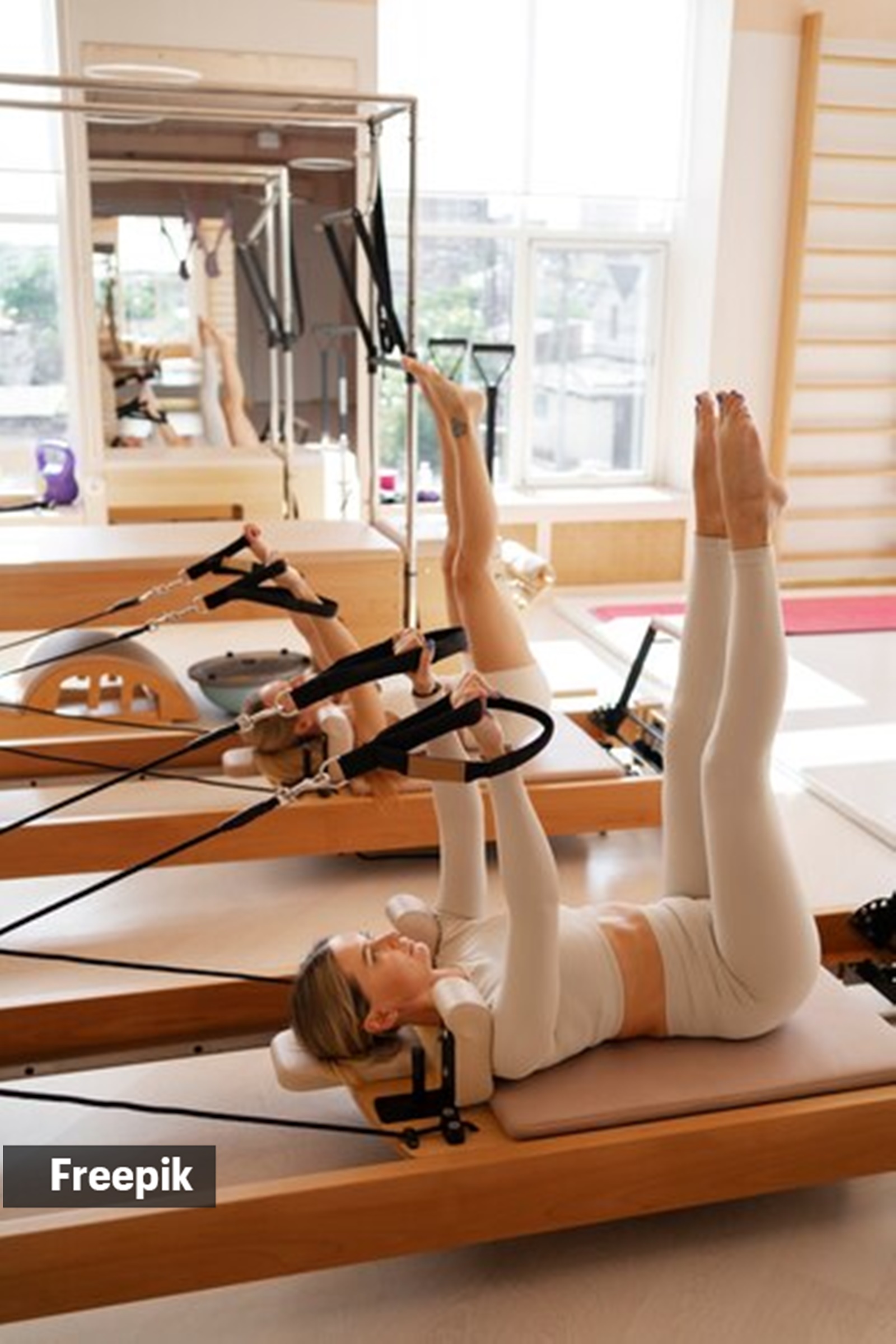The secret behind her enviable upper body strength lies in a rigorous Pilates routine that not only tones the arms but also promises to burn fat efficiently. In a recent video shared by her trainer Namrata Purohit, the actor flawlessly demonstrated an arm exercise using Pilates principles.
“@kareenakapoorkhan knows how to do it right,” she captioned the post.
This low-impact yet high-intensity workout targets multiple muscle groups, making it an effective way to build lean muscle mass while simultaneously boosting metabolism.
Allan Thomas, owner at Zealbox, Powai, tells indianexpress.com, “The seated upper body strap workout on a Pilates reformer is highly effective for burning fat and toning arms. This exercise engages multiple muscle groups, including the biceps, triceps, shoulders, and upper back. The resistance provided by the reformer machine helps build lean muscle, which can increase metabolism and aid in fat burning. Additionally, the controlled movements typical of Pilates enhance muscle endurance and promote a more toned appearance.”
Specific benefits of the half-bending position in this workout
The half-bending position, often used in Pilates, Thomas says, significantly benefits the core and overall stability. “By maintaining a semi-reclined position, the abdominal muscles are continuously engaged to support the upper body.”
This constant engagement helps strengthen the core muscles, improve balance, and enhance postural alignment. Additionally, this position encourages the activation of stabiliser muscles around the spine and pelvis, contributing to better overall body stability.

How often should one perform this workout?
To see noticeable results in arm toning and fat burning, Thomas recommends performing this Pilates workout 3 to 4 times per week. “Consistency is key in achieving and maintaining muscle tone and fat loss. Pairing the workouts with a balanced diet and other forms of cardio exercise can accelerate results.”
Some common mistakes people might make when performing this exercise
Some common mistakes in performing this exercise include improper alignment, overextending the arms, and using momentum instead of controlled movements, says Thomas.
To avoid these mistakes, he suggests the following factors one must keep in mind:
Maintain Proper Form: Keep the shoulders relaxed and away from the ears. Ensure the spine is neutral and the core is engaged.
Avoid Overextension: Do not overreach with the arms. The movements should be smooth and within a comfortable range of motion.
Control the Movement: Focus on slow, controlled motions rather than using momentum. This maximises muscle engagement and reduces the risk of injury.
Breathing: Coordinate your breath with your movements. Inhale during preparation and exhale during exertion to maintain stability and oxygen flow.
© IE Online Media Services Pvt Ltd
First uploaded on: 24-06-2024 at 11:30 IST


